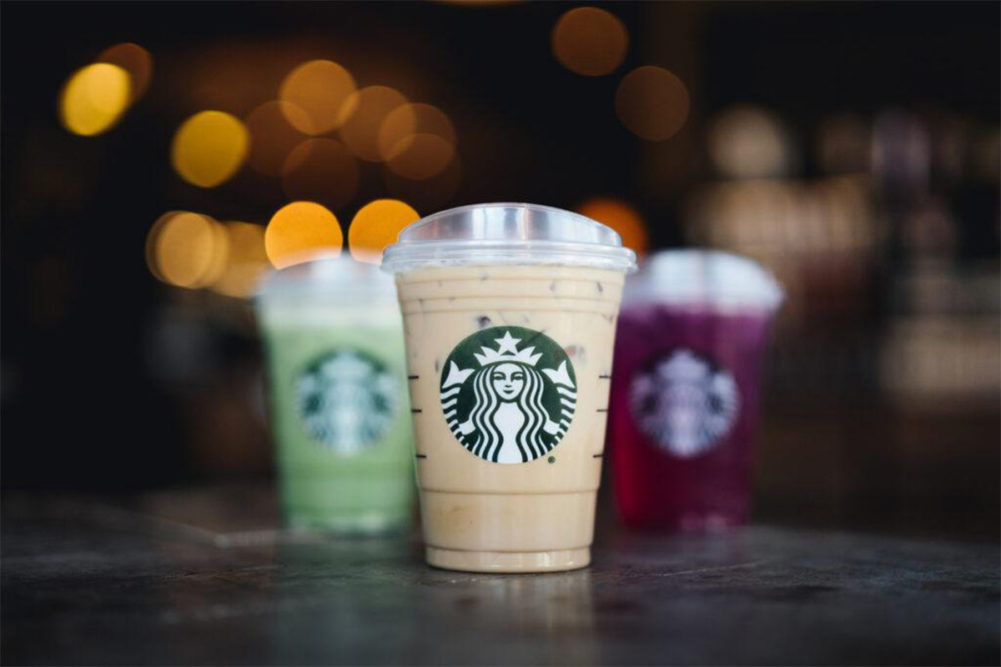SEATTLE — Just over half of Starbucks customers in the United States are Generation Z or millennials, a key reason executives are optimistic about the future of the brand.
“When you go into our stores, you see that the relevance of Starbucks is not the coffee your parents drink, but the coffee that young people are choosing every single day,” said Brady Brewer, chief marketing officer of Starbucks Corp., during a Nov. 3 earnings call. “Our brand position right now, we have the strongest brand affinity of any away-from-home coffee brand around the world, and it’s seen as the first choice for coffee away from home. So, the younger you go, the stronger the brand affinity gets. And the more diverse you go, the stronger the brand affinity gets. And so for all of those reasons, we continue to cater to a very diverse and increasingly young customer base with those cold, customized, plant-based beverages, and the strategy is working.”
Howard D. Schultz, founder and interim chief executive officer, said the company has consistently monitored the average age of its customer base.
“Not only has it gotten younger, but that young customer, that Gen Z customer, tends to have significantly more discretionary money at their disposal,” Mr. Schultz said. “And their loyalty to Starbucks has been quite significant and predictable.”
Younger consumers are propelling growth of Starbucks’ cold coffee beverages, which account for 76% of total beverage sales in company-operated stores in the United States, Mr. Schultz said, adding, “And customers are increasingly further customizing their cold coffee beverages by adding high-margin beverage flavor modifiers to create unique beverages tailored to their own particular taste preferences.”
Additionally, in the recent quarter, more than 60% of beverages sold in US company-operated stores were customized, “contributing to the $1 billion and growing annual net sales for modifiers,” doubling over the past three years, said Sara Trilling, president of Starbucks North America.
Mr. Schultz said cold beverages are in “early stages in terms of what’s coming,” pointing to continued innovation in the category in the year ahead.
“However, no one should kind of walk away and think about the fact that our hot coffee business is not growing,” he added. “In fact, it’s growing nicely, but cold has kind of taken over. But we have significant innovation plans for hot. So I think the percentage of revenue cold versus hot, I think you’ll see hot go up as a result of the innovation we have around the hot platform.”
Net earnings attributable to Starbucks for the fiscal year ended Oct. 2 were $3.3 billion, equal to $2.83 per share on the common stock, down 22% from net earnings of $4.2 billion, or $3.54 per share, the year before. Operating margin contracted due to increased investments in labor, inflationary headwinds and lower sales in China due to pandemic restrictions.
Net revenues for the full year totaled $32.3 billion, up 11% from $29.1 billion. Revenues increased 13% on a 52-week basis.
Fourth-quarter earnings were $878.3 million, or 76¢ per share, down 50% from $1.7 billion, or $1.49, in the comparable period. Total revenues for the quarter increased 3.3% to $8.4 billion from $8.1 billion. Revenues were up 11% on a 13-week basis.
Global comparable store sales advanced 8% for the full year and 7% for the quarter. North America comparable store sales increased 12% for the full year and 11% for the quarter. International comparable store sales decreased 9% for the year and 5% for the quarter. China comparable store sales declined 24% for the year and 16% for the quarter due to government lockdowns related to COVID-19.
“Our performance supports our confidence in the ambitious growth agenda we announced in September, in which we will be adding roughly eight new stores per day, delivering best-in-class returns around the world every day for the next three years, bringing us to nearly 45,000 stores globally by the end of fiscal 2025,” Mr. Schultz said.
Operating income for the Channel Development segment in the fourth quarter increased 11% to $244.6 million, with revenues up 10% to $483.7 million, driven by growth in the Global Coffee Alliance and global ready-to-drink businesses.
“Channel Development continued to play a vital role in differentiating, diversifying and amplifying our brand by creating customer occasions outside our stores,” said Rachel Ruggeri, chief financial officer. “As a result, Starbucks remains the market leader in both the total US at-home coffee and ready-to-drink categories.”
Results in the fourth quarter demonstrate early success of Starbucks’ reinvention plan, outlined during the company’s recent investor day, Mr. Schultz said. For the year ahead, the company expects to achieve global and US comparable store sales growth in the range of 7% to 9% and to grow its global store count by approximately 7%, with more than 75% of the growth coming from outside the United States. Management also expects earnings per share growth to reach the high end of its 15%-to-20% range.
“With this powerful combination of global comp and store growth, coupled with our Channel Development performance, we expect our consolidated revenue growth to reach the range of 10% to 12% in fiscal year 2023 despite an approximately 3-percentage-point unfavorable impact expected from foreign currency translation,” Ms. Ruggeri said. “Within fiscal 2023, the unfavorable impact of foreign currency translation is expected to reach approximately 4 percentage points in the first half of the fiscal year, tempering to approximately 1 to 2 percentage points in the back half of the year.
“Despite the considerable pressure we now expect from foreign currency translation, which could abate, we remain confident in our revenue guidance range for the full year. We have a solid path to capture strong demand, maximize opportunities unlocked from our reinvention plan and deliver attractive revenue results.”
Starbucks’ share price increased in after-hours trading, opening on Nov. 4 at $91.98, up 8.6% from its Nov. 3 close at $84.68.





